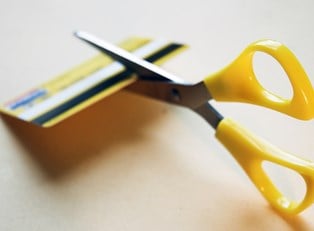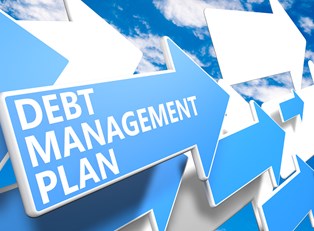Most people today are accustomed to living with debt. The media exhorts us to buy, use credit, get the best, the latest, and that we owe ourselves things that we cannot afford. Debt is easy to accumulate with offers through the mail and at stores, and on college campuses. Before long, a small credit card balance can become an increasingly large minimum payment, and then lead to more credit cards.
If you’re tired of feeling beholden to your monthly debt payments, you need to understand that you did not get into this situation overnight. Paying off debts for most people is a long-term commitment, and though it is difficult, it is by no means impossible. Many people have managed to pay off large amounts of debt in relatively short periods of time, and there are several websites that offer debt information and assistance. In order to pay off debt, you have to be motivated and committed to a specific plan.
Create a Budget and Form a Plan
First, you need to create a budget, and determine how much money you have left after all bills are paid. List and rank all debt according to balance amounts and interest rates. The advantage to organizing your debts is that it provides you with a visual representation of your debt obligations and can help you formulate a plan for repaying all of your debt.
The Snowball Strategy
There are many theories claiming to be the best way to pare down debt, but not all theories are appropriate for everyone. A popular debt payment strategy is called a debt snowball. This strategy involves paying off the debt with the smallest balance first. Paying off a credit card with a balance of $1000 and a monthly payment of $100 may not seem like a huge victory compared to heftier debts, but you can usually pay off lower debts quicker.
After you have paid off your lowest debt, you move on to the next lowest. Here you pay the minimum amount due every month plus the amount of money you were paying to the previous debt. So if the minimum payment is $200 a month, you pay that and the $100 you had allotted to the other debt. As you pay off your lower debts, you can apply more money to the heavier debts and pay them off in a shorter amount of time.
If you have one or two debts with insanely high interest rates (a common result of late payments or bad credit), look into a debt consolidation or credit card consolidation service. By turning two, high interest debts into one debt with low interest, it may become more manageable. Especially if you were drowning in the finance charges! (Just don't let the one minimum payment keep you from paying down the same amount).
Following this debt repayment plan makes managing your budget and debt expenses simple and effective. When you essentially roll money over from one debt payment to another, you create a hefty sum that doesn't wreck your budget or take money away from your other responsibilities.




